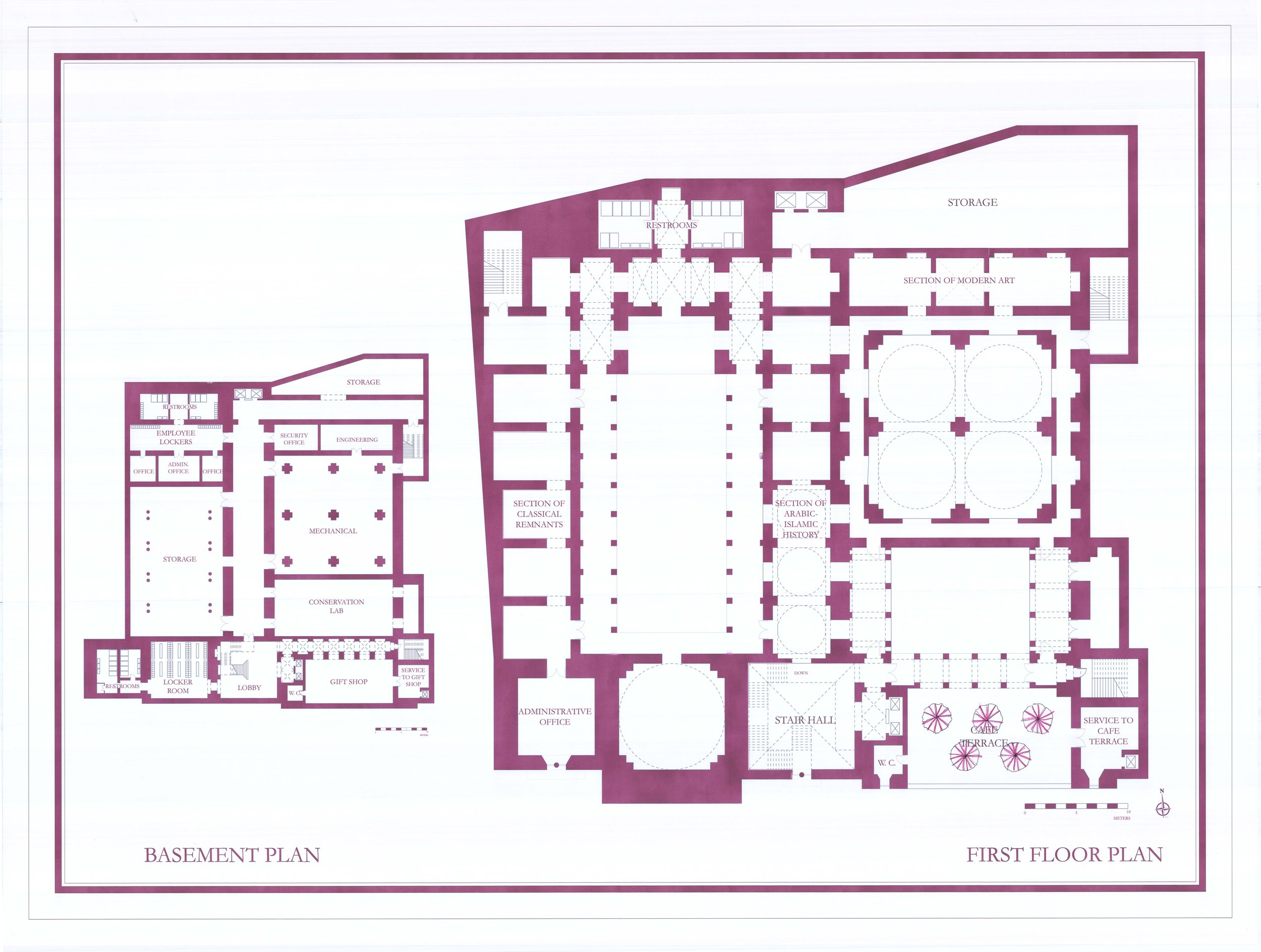The National Museum of Aleppo, Syria
Spring 2022









About The National Museum of Aleppo
The National Museum of Aleppo was founded in 1931, and is the largest museum in the city of Aleppo. A small Ottoman palace was designated for the museum, and it is located in the heart of the northern city on Baron Street, adjacent to the famous Baron Hotel and near the Bab al-Faraj Square and Clock Tower. The majority of the museum's exhibitions are devoted to the archaeology of Syria, with most of the finds coming from archaeological sites of the northern part of the country. After three decades, the museum’s collection became two large for the historic palace’s capacity. In 1966, the original palace was destroyed to make way for the structure that currently exists today. In July 2016, the structure was hit with several missiles and mortar shells fired by rebel forces, causing severe damage to the roof and the structure of the building.
The purpose of this project is to create a new National Museum of Aleppo that responds to the context of the historic city and pays homage to the rich architectural heritage of Syria. Instead of building in the standalone block of the current site, the new building site is placed in the ancient urban fabric of Aleppo close to the citadel, on a site that was damaged beyond repair. The new proposal stays true to the original building program of the museum. On the ground floor, there is a section of Prehistoric Culture, which is one large hall, and a Section of Ancient Syrian Civilizations, which is consists of many smaller halls including: The Hall of Al Jazeera Hills (means “the island”), The Hall of Mari, The Hall of Hama Region, The Hall of Ugarit (ancient port city in northern Syria), The Hall of Tell Halaf (archeological site in northern Syria), The Hall of Arslan Tash (archeological site in northern Syria), The Hall of Tell Ahmar (an ancient site situated by the Euphrates), The Hall of Ebla, and The Hall of Ancient Statues and Cuneiform Scripts. The upper floor consists of the Section of Classical Remnants, Section of Arabic-Islamic History, and Section of Modern Art. The new proposal also adds a gift shop and a café with a terrace that overlooks the more intimate palm court.
Islamic architecture is an inward looking architecture, with an emphasis on the rich decoration of the courtyard rather than the exterior façade. Since the National Museum of Aleppo is a public monumental building, it has a presence on the streetscape. The primary parti of the design is a double courtyard building with museum galleries surrounding the courtyard spaces. The main courtyard is typical of traditional Islamic garden design, with the garden divided into four parts and an octagonal fountain in the center, symbolizing paradise. The water channel contributes to the sound, aesthetics, and cooling of the space. The palm court provides shade and respite from the hot and arid climate of Aleppo. Danielle looked to Khan As' ad Pasha and Azm Palace in Damascus for precedent for the design and architectural detail of this monumental building.